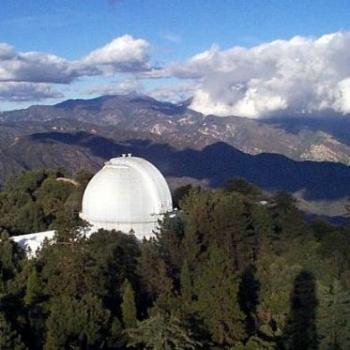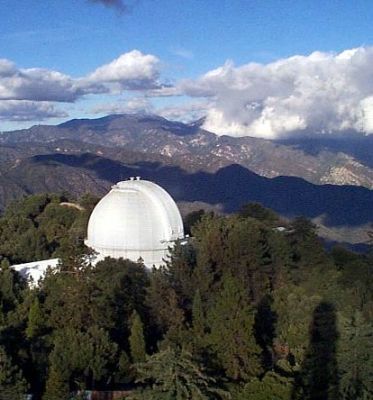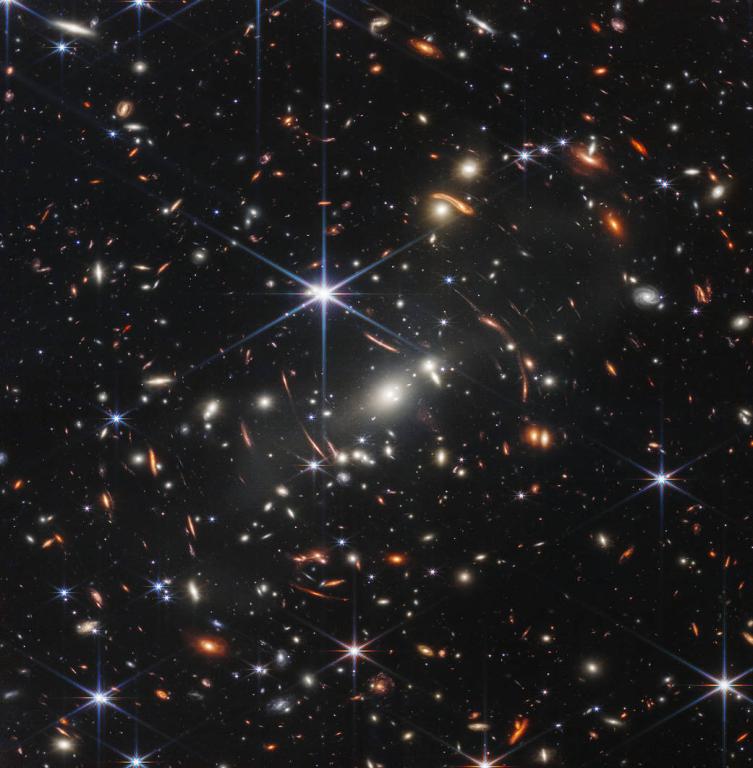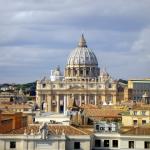
In his very brief article “The Seven Seals, the Age of the Earth, and Ongoing Revelation” (BYU Studies 64/1 [2025]: 95-96, Professor Nicholas J. Frederick argues that Doctrine and Covenants 77 — which is built upon a revelation received by the Prophet Joseph Smith in 1832 — should not be taken in isolation when Latter-day Saints discuss their doctrinal position (if we really even have one -dcp) on the age of the earth. Dr. Frederick says that statements that Joseph made years later, in 1843, cast Doctrine and Covenants 77 in a rather different interpretive light, allowing (by implication) for a greatly expanded chronology that is more in line with the findings of contemporary science than some have imagined.
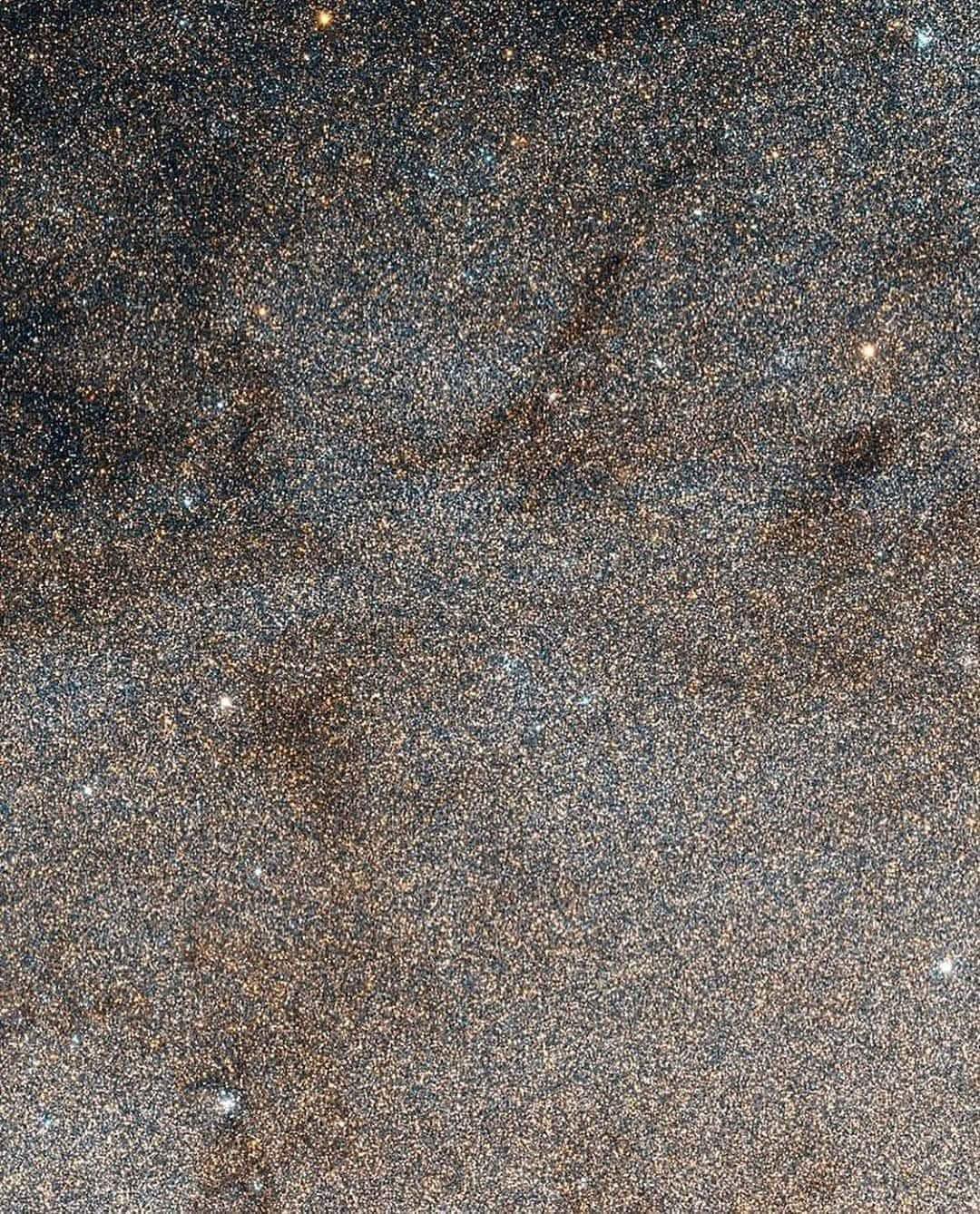
The NASA photograph above, taken by the Hubble Space Telescope, reveals just a small section of the Andromeda Galaxy — a spiral galaxy rather like our own Milky Way, and our closest galactic neighbor. The photograph is thought to depict nearly two billion stars, which offers at least a suggestion of Andromeda’s immense scale and beauty. And the Milky Way and Andromeda are just two of the currently estimated two trillion — that’s two trillion — galaxies in the observable universe. How many stars do they contain? Current estimates suggest that there are approximately 1024 stars — in other words, more stars (and, potentially, more Earth-like planets) than all the grains of sand on all of the beaches of Planet Earth.
I couldn’t help but think, in this context, of words revealed to Joseph Smith in June 1830:
And he beheld many lands; and each land was called earth, and there were inhabitants on the face thereof.
And it came to pass that Moses called upon God, saying: Tell me, I pray thee, why these things are so, and by what thou madest them?
And behold, the glory of the Lord was upon Moses, so that Moses stood in the presence of God, and talked with him face to face. And the Lord God said unto Moses: For mine own purpose have I made these things. Here is wisdom and it remaineth in me.
And by the word of my power, have I created them, which is mine Only Begotten Son, who is full of grace and truth.
And worlds without number have I created; and I also created them for mine own purpose; and by the Son I created them, which is mine Only Begotten.
And the first man of all men have I called Adam, which is many.
But only an account of this earth, and the inhabitants thereof, give I unto you. For behold, there are many worlds that have passed away by the word of my power. And there are many that now stand, and innumerable are they unto man; but all things are numbered unto me, for they are mine and I know them. (Moses 1:29-35)

While I’m thinking about outer space: For what it’s worth, after we had finished our filming for the Becoming Brigham documentary series in upstate New York and then in Kirtland, Ohio, a couple of weeks back, we spent our final night in an airport hotel — The Orbit Hotel — in Cleveland, waiting for our return flights the next morning. The Orbit Hotel is a curious place. Online, it’s described as featuring “mid-century modern design.” In other words, it feels like something from the 1950s or 1960s, decades that constitute prime historical territory for the beginnings of NASA’s manned space program. (Some of the things that I read about it described it as reminiscent of Lost in Space or The Jetsons.) It turns out that The Orbit is situated within a former office building that belonged to the National Aeronautics and Space Administration. it’s oddly located for a hotel, even an airport hotel, and is part of a much larger but architecturally consistent complex.
It’s also located directly across a busy road from NASA’s Glenn Research Center, which sits adjacent to Cleveland Hopkins International Airport. The place is obviously named after the late Marine fighter pilot and pioneer astronaut John Glenn (1921-2016), who was born in Ohio and died in Ohio and, of course, represented Ohio in the Senate of the United States from 1974 until his retirement from office in 1999. The Glenn Research Center’s main campus, Lewis Field, includes such facilities as wind tunnels, drop towers, vacuum chambers, and a research aircraft hangar. To the best of my recollection, I had never heard of it before. But it seems an interesting place.

My blogging may or may not be very regular here between today and Saturday, 3 May, and I want to offer an explanation (and an apology) for that in advance: I leave tomorrow morning to participate in a Muslim/Christian conference in Samarkand, Uzbekistan. The travel arrangements are fairly brutal — driving up to Salt Lake City for a flight to Houston and on to Dubai and on to Samarkand, then the conference sessions, then an overnight bus trip to Bukhara, returning back by bus to Samarkand, then going by train to Tashkent, then flights from Tashkent to Dubai, on to Houston, and finally to SLC, arriving very late on Friday, 2 May, for the drive back home to Utah Valley (I’m wallowing in self-pity at the moment) — and there are hints that the WiFi while there in Samarkand may not be altogether reliable. So we shall see.








